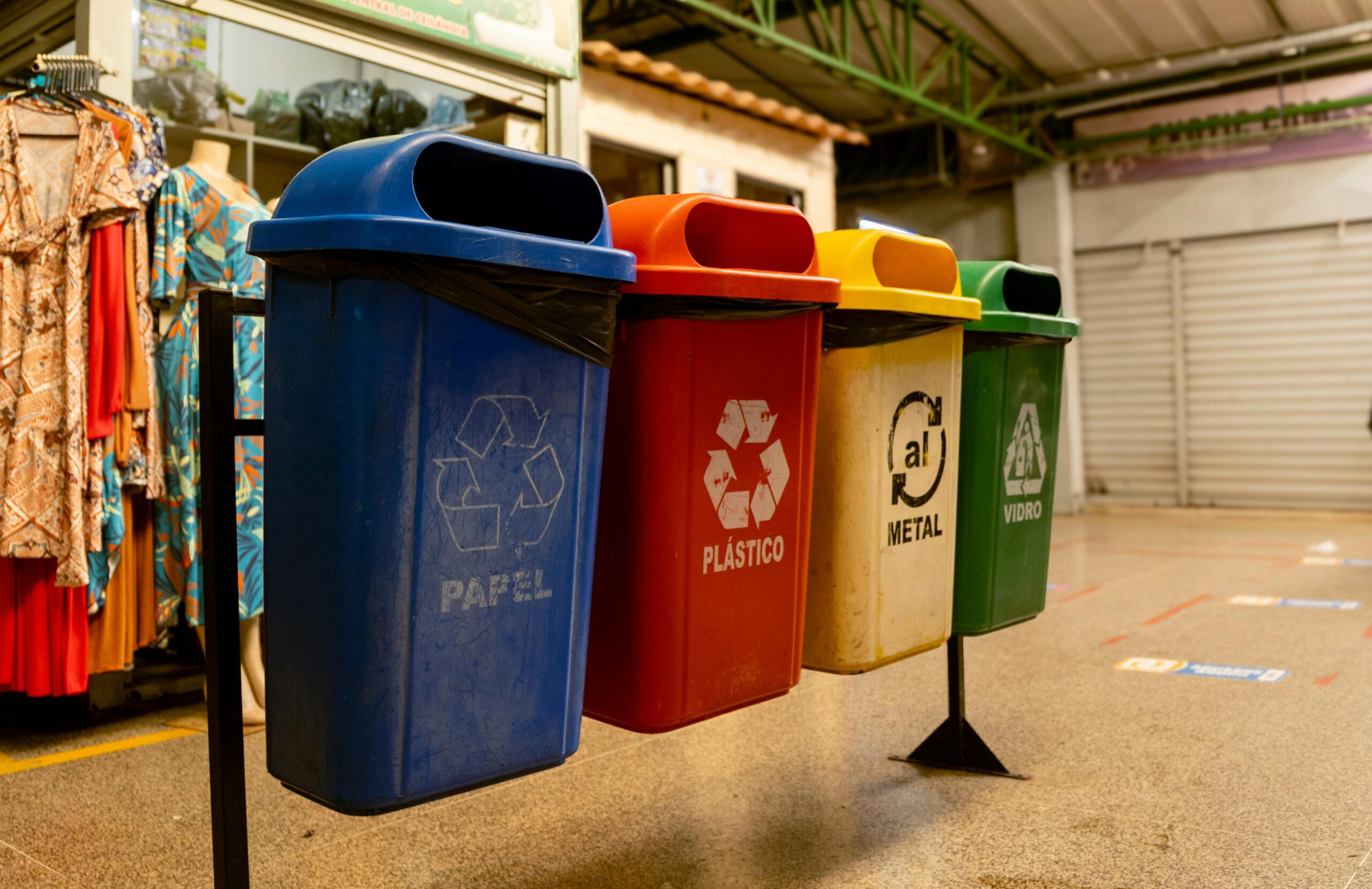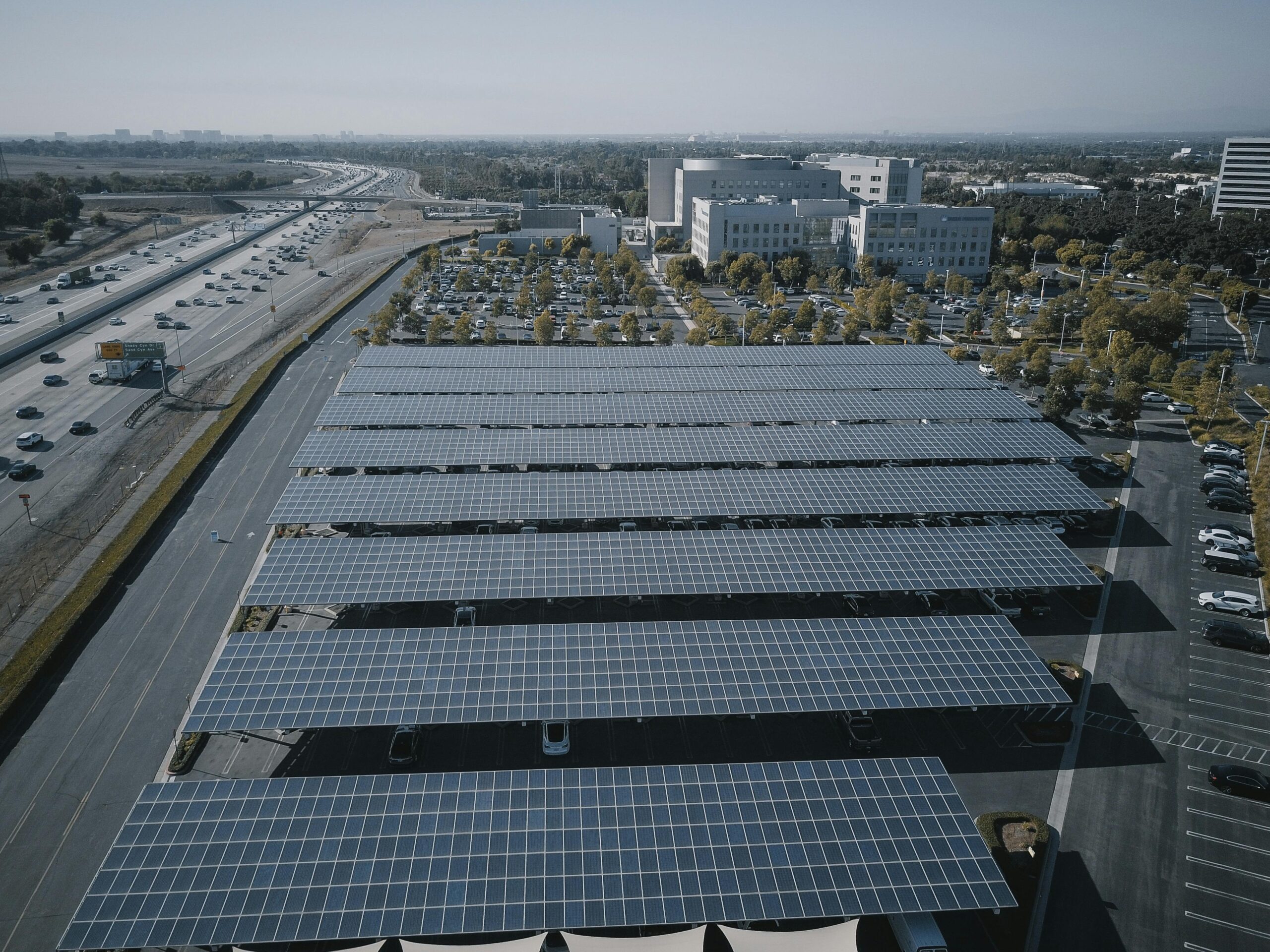The world generates over 2 billion tons of waste annually, and traditional disposal methods are no longer sustainable. Smart recycling hubs represent a revolutionary approach to transforming how communities manage waste while protecting our planet.
🌍 The Global Waste Crisis Demands Innovation
Our planet faces an unprecedented waste management challenge that threatens ecosystems, human health, and economic stability. Landfills overflow with materials that could be reused, oceans accumulate plastic debris, and greenhouse gas emissions from waste decomposition contribute significantly to climate change. The traditional linear economy model of “take, make, dispose” has reached its breaking point.
Smart recycling hubs emerge as a technological breakthrough in this critical moment. These intelligent facilities combine artificial intelligence, Internet of Things sensors, and data analytics to optimize waste sorting, processing, and resource recovery. Unlike conventional recycling centers, smart hubs can identify materials with remarkable accuracy, reduce contamination rates, and maximize the value recovered from discarded items.
The economic case for smart recycling infrastructure is compelling. Countries that have invested in advanced waste management systems report significant returns through material recovery, job creation, and reduced environmental cleanup costs. The circular economy principles embedded in smart recycling hubs create value chains where waste becomes a resource rather than a burden.
💡 How Smart Recycling Hubs Transform Waste Management
Smart recycling hubs operate on principles fundamentally different from traditional recycling centers. At their core, these facilities utilize advanced sensor technology to identify and separate materials with precision that human sorters cannot match. Optical scanners, near-infrared sensors, and artificial intelligence algorithms work together to distinguish between dozens of material types in milliseconds.
The process begins when waste arrives at the hub. Automated conveyor systems transport materials through scanning stations where cameras and sensors capture detailed information about each item. Machine learning algorithms, trained on millions of images, instantly categorize materials by type, color, and even brand. This information guides robotic sorting arms that can pick and place items faster than any manual system.
Data collection represents another revolutionary aspect of smart recycling hubs. Every piece of waste provides information about consumption patterns, material flows, and recycling efficiency. This data helps municipalities optimize collection routes, manufacturers design more recyclable products, and policymakers create evidence-based environmental regulations.
Key Technologies Powering Smart Recycling
Several breakthrough technologies enable smart recycling hubs to achieve unprecedented efficiency. Artificial intelligence drives decision-making processes, continuously learning from new data to improve sorting accuracy. Computer vision systems identify materials even when labels are torn or contaminated, while robotics handle the physical manipulation of objects.
IoT sensors monitor equipment performance in real-time, predicting maintenance needs before breakdowns occur. This preventive approach minimizes downtime and ensures continuous operation. Blockchain technology provides traceability for recycled materials, creating transparent supply chains that build consumer confidence and enable premium pricing for verified recycled content.
Cloud computing platforms aggregate data from multiple hubs, creating comprehensive waste management ecosystems. These networks identify regional trends, optimize logistics, and facilitate material exchanges between facilities. The result is a interconnected system that operates far more efficiently than isolated recycling centers.
♻️ Environmental Benefits That Matter
The environmental advantages of smart recycling hubs extend far beyond simply diverting waste from landfills. These facilities dramatically reduce greenhouse gas emissions by recovering materials that would otherwise decompose or require energy-intensive virgin production. Recycling aluminum, for example, uses 95% less energy than producing new aluminum from bauxite ore.
Water conservation represents another significant benefit. Manufacturing products from recycled materials typically requires substantially less water than virgin production. Smart recycling hubs maximize material recovery rates, multiplying these conservation effects across entire economies.
Pollution prevention occurs at multiple levels. By keeping materials out of landfills and incinerators, smart hubs reduce soil contamination, air pollution, and toxic leachate. Ocean plastic pollution decreases when effective recycling systems capture plastic waste before it enters waterways. The cumulative effect of widespread smart recycling adoption could transform environmental outcomes globally.
Measuring Real-World Impact
Quantifiable metrics demonstrate the effectiveness of smart recycling hubs. Facilities equipped with AI-powered sorting achieve purity rates exceeding 95% for many material streams, compared to 85% or lower for manual sorting. This increased purity makes recycled materials more valuable and easier to reintegrate into manufacturing processes.
Communities implementing smart recycling hubs report diversion rates increasing by 30-50% within the first year. These improvements translate directly into reduced landfill usage, extended landfill lifespans, and lower waste management costs. The financial savings can then fund additional environmental initiatives, creating a positive feedback loop.
🏙️ Building Smarter Cities Through Intelligent Waste Systems
Smart recycling hubs serve as anchors for broader smart city initiatives. The data generated by these facilities informs urban planning decisions, from optimizing collection schedules to locating new development projects. Cities that integrate waste management data with other urban systems create more responsive, efficient municipal services.
Community engagement increases when residents see tangible results from their recycling efforts. Digital dashboards connected to smart hubs can show neighborhoods their environmental impact in real-time, gamifying waste reduction and fostering competition between districts. This transparency builds trust and encourages participation in sustainability programs.
Economic development follows smart recycling infrastructure. These facilities create skilled jobs in technology, engineering, and operations. Secondary businesses emerge to process recovered materials, manufacture products from recycled content, and provide support services. The economic multiplier effect strengthens local economies while advancing environmental goals.
Integration with Mobile Technology
Mobile applications complement smart recycling hubs by extending their capabilities into homes and businesses. Waste management apps help users identify recyclable materials, locate nearby drop-off points, and schedule pickups for bulky items. Some applications use image recognition to scan product barcodes and provide instant recycling instructions.
Reward programs delivered through mobile apps incentivize proper recycling behavior. Users earn points for correctly sorted materials, redeemable for discounts at local businesses or municipal services. This positive reinforcement changes habits more effectively than penalty-based approaches.
💰 Economic Advantages for Communities and Businesses
The financial case for smart recycling hubs extends beyond environmental benefits. Material recovery generates revenue streams that offset operational costs. Metals, plastics, glass, and paper all have market value, and the high purity rates achieved by smart hubs command premium prices.
Operational efficiency reduces costs throughout the waste management chain. Automated sorting requires fewer workers for routine tasks, allowing human employees to focus on system optimization, maintenance, and quality control. Energy consumption per ton of processed material decreases due to optimized workflows and equipment efficiency.
Risk reduction provides another economic advantage. Smart hubs minimize contamination incidents that can spoil entire batches of recyclables. Real-time monitoring catches problems immediately, preventing costly shutdowns and material losses. Predictive maintenance prevents equipment failures that would require expensive emergency repairs.
Return on Investment Analysis
Initial capital costs for smart recycling hubs are substantial, typically ranging from several million to tens of millions of dollars depending on capacity and technology sophistication. However, comprehensive financial analyses consistently show positive returns within 5-10 years when considering both direct revenue and avoided costs.
Long-term savings accumulate from multiple sources. Reduced landfill tipping fees represent immediate savings for municipalities. Extended equipment lifespans due to better maintenance reduce capital replacement cycles. Higher material values and lower contamination rates improve revenue per ton processed.
🚀 Innovative Features Defining Next-Generation Hubs
The latest smart recycling hubs incorporate features that seemed futuristic just years ago. Chemical recycling systems break down plastics at the molecular level, enabling true circular recycling of materials that were previously downcycled or landfilled. These processes can handle mixed and contaminated plastics that defeat traditional mechanical recycling.
Energy recovery systems capture value from materials that cannot be recycled. Anaerobic digestion converts organic waste into biogas for electricity generation or vehicle fuel. Waste-to-energy technologies provide dispatchable renewable power while dramatically reducing landfill volumes.
Modular design allows facilities to scale capacity as demand grows. Additional sorting lines, specialized processing equipment, or expanded storage can be added without disrupting ongoing operations. This flexibility helps communities right-size their infrastructure while maintaining options for future expansion.
Artificial Intelligence Continues Advancing
Machine learning algorithms improve continuously as they process more waste. Today’s systems recognize thousands of product types and can adapt to new packaging designs without human reprogramming. Future developments promise even greater capabilities, including identifying chemical composition, assessing material degradation, and optimizing sorting decisions based on dynamic market prices.
Predictive analytics anticipate waste generation patterns, helping facilities prepare for seasonal variations or special events. Holiday shopping periods, spring cleaning seasons, and local festivals all generate distinctive waste profiles that smart systems can predict and accommodate.
🌱 Social Impact and Community Transformation
Smart recycling hubs catalyze broader social changes beyond waste management. Educational programs built around these facilities teach children and adults about material lifecycles, environmental science, and sustainable living. Transparent operations demystify recycling processes and build public support for environmental initiatives.
Environmental justice improves when communities historically burdened by waste facilities gain access to clean, modern smart hubs. Advanced odor control, noise reduction, and pollution prevention technologies make these facilities acceptable neighbors. Strategic placement in underserved areas provides local employment opportunities and environmental improvements simultaneously.
Public health benefits emerge from reduced pollution and improved waste management. Fewer landfills mean less groundwater contamination and reduced disease vector habitats. Cleaner neighborhoods experience decreased respiratory illnesses and improved quality of life.
🔧 Overcoming Implementation Challenges
Despite their advantages, smart recycling hubs face adoption barriers that communities must address. Initial capital requirements challenge smaller municipalities with limited budgets. Public-private partnerships, regional collaborations, and innovative financing mechanisms help overcome these obstacles. Grant programs and green bonds provide additional funding pathways.
Technical expertise requirements demand workforce development initiatives. Training programs prepare workers for technology-intensive careers in modern waste management. Partnerships with educational institutions create pipelines of qualified personnel while offering students meaningful career opportunities in sustainability fields.
Behavioral change among residents requires persistent education and engagement efforts. Clear communication about what materials belong in which streams reduces contamination. User-friendly systems that forgive minor sorting errors while gently correcting behavior achieve better compliance than punitive approaches.
🌟 The Path Forward: Scaling Global Adoption
Accelerating smart recycling hub deployment requires coordinated action across sectors. Government policies can incentivize investment through tax credits, expedited permitting, or guaranteed material purchase programs. Regulatory frameworks that establish minimum recycling standards or ban recyclable materials from landfills create market conditions favoring smart hub development.
Technology providers must continue improving performance while reducing costs. Standardization of components and open-source control systems can lower barriers to entry. Collaboration between manufacturers, researchers, and operators drives innovation that benefits the entire industry.
International knowledge sharing accelerates global progress. Communities that have successfully implemented smart hubs can mentor others embarking on similar journeys. Best practice databases, technical assistance programs, and sister city relationships transfer expertise efficiently.

🎯 Creating Your Community’s Recycling Revolution
Communities ready to embrace smart recycling should begin with comprehensive waste characterization studies. Understanding current waste streams, contamination rates, and disposal costs establishes baseline metrics and identifies improvement opportunities. This data supports grant applications and business case development.
Stakeholder engagement builds essential support. Municipal leaders, business owners, environmental advocates, and residents all have perspectives that strengthen planning processes. Inclusive approaches that address concerns and incorporate diverse viewpoints result in more robust implementations.
Pilot projects demonstrate capabilities and build confidence before full-scale commitments. Starting with limited scope allows communities to learn, adapt, and refine approaches. Successful pilots generate momentum for expansion and provide concrete evidence when seeking additional funding.
The revolution in waste management through smart recycling hubs is not a distant possibility but an achievable reality today. Communities worldwide are demonstrating that technology, commitment, and collaboration can transform how we handle discarded materials. These intelligent facilities prove that environmental responsibility and economic prosperity are complementary goals rather than competing priorities.
As we face mounting environmental challenges, smart recycling hubs offer practical solutions that deliver measurable results. They reduce pollution, conserve resources, create jobs, and strengthen communities. The question is not whether to adopt this technology, but how quickly we can scale deployment to meet the urgent needs of our planet. Every community that implements a smart recycling hub takes a meaningful step toward a cleaner, more sustainable future for all.
Toni Santos is an urban innovation writer and researcher dedicated to exploring how technology, sustainability, and design are reshaping the cities of tomorrow. With a deep interest in smart infrastructure and human-centered development, Toni studies how data-driven systems and green technologies can create more livable, resilient, and efficient urban environments. Fascinated by sustainable architecture, IoT integration, and next-generation mobility, Toni’s work connects environmental awareness with digital transformation. Through research and storytelling, he examines how intelligent planning and renewable innovation can redefine the relationship between people and their cities. Blending urban design, environmental science, and systems thinking, Toni documents the breakthroughs that are reimagining how we build, move, and coexist. His work highlights the architects, engineers, and technologists leading the charge toward smarter, greener futures. His work is a tribute to: Green architecture as the foundation for sustainable living IoT innovation shaping the infrastructure of connected cities Mobility systems and renewable energy driving urban transformation Whether you’re an architect, engineer, or city planner, Toni Santos invites you to explore the technologies and ideas building the smart, sustainable cities of the future — one street, one system, one vision at a time.




